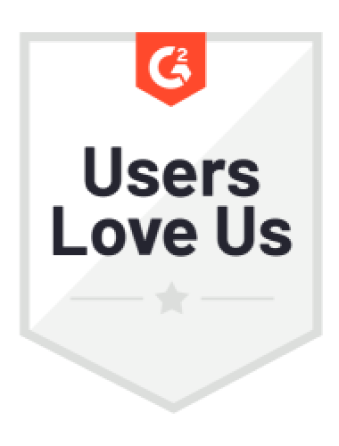Business Intelligence Tool Comparison: Sigma vs. Sisense
In today's data-driven business landscape, organizations rely heavily on business intelligence (BI) tools to gain insights and make informed decisions. Sigma and Sisense are two prominent BI platforms that offer powerful features and capabilities. This article aims to provide an in-depth comparison of these two tools, allowing you to make an informed decision based on your specific business needs. Let's first understand the role of business intelligence and its importance in today's business environment.
Understanding Business Intelligence Tools
Business Intelligence (BI) tools are software applications that analyze and present data in a meaningful way, helping organizations uncover valuable insights. These tools enable businesses to collect, store, analyze, and visualize large volumes of data from various sources, such as databases, spreadsheets, and cloud-based solutions. With the increasing volume and complexity of data, BI tools have become essential for effective decision-making and staying ahead in the competitive market.
The Role of Business Intelligence in Today's Business
As businesses generate massive amounts of data, extracting actionable insights from this data is crucial to gaining a competitive advantage. Business intelligence tools play a vital role in this process by providing the means to transform raw data into meaningful information and actionable insights. By analyzing trends, patterns, and relationships within the data, organizations can make data-driven decisions, identify opportunities, minimize risks, and optimize their overall performance.
Key Features of Business Intelligence Tools
BI tools offer various features that empower users to explore and analyze data effectively. These features typically include:
- Data Visualization: BI tools provide intuitive and interactive visual representations of data, such as charts, graphs, and maps, making it easier for users to understand complex information at a glance.
- Advanced Analytics: BI tools incorporate sophisticated analytical capabilities, such as advanced algorithms, statistical models, and predictive analytics, enabling users to discover hidden patterns and trends within the data.
- Dashboarding: BI tools allow users to create customizable dashboards and reports to present key metrics, KPIs, and real-time updates in a visually appealing manner.
- Data Integration: BI tools can connect to various data sources, both internal and external, consolidating data from multiple systems into a centralized repository for analysis.
Furthermore, BI tools often provide users with the ability to collaborate and share insights with colleagues, fostering a culture of data-driven decision-making across the organization. This collaborative feature allows teams to work together on analyzing data, discussing findings, and collectively identifying opportunities for improvement.
In addition to the core features mentioned above, some BI tools offer advanced capabilities, such as natural language processing (NLP), which allows users to interact with the data using everyday language. This feature makes it easier for non-technical users to query and explore data, democratizing access to insights and empowering a wider range of employees to make informed decisions.
Moreover, many BI tools also provide data governance features, ensuring data quality, security, and compliance. These features enable organizations to establish data standards, define access controls, and monitor data usage, promoting trust in the data and maintaining regulatory compliance.
In conclusion, business intelligence tools are essential for organizations to make sense of the vast amounts of data they generate. With their powerful features, these tools enable businesses to transform raw data into meaningful insights, empowering decision-makers to drive growth, innovation, and competitive advantage in today's data-driven world.
An In-depth Look at Sigma
Sigma is a cloud-based BI tool that emphasizes collaboration and productivity. Its intuitive interface and powerful features make it a popular choice among data analysts and business users alike.
Overview of Sigma
Sigma provides a user-friendly interface that enables users to easily explore and visualize data. It allows users to connect to various data sources and perform complex data transformations without the need for coding. Sigma's drag-and-drop functionality makes it straightforward to create interactive dashboards and reports in real-time.
But let's dive deeper into what makes Sigma stand out from other BI tools. One of its standout features is its ability to handle large datasets with ease. Whether you're dealing with millions of rows of data or complex data models, Sigma's data modeling capabilities allow you to efficiently manage and analyze your data.
Additionally, Sigma offers a unique feature called embedded analytics. This means you can seamlessly embed your dashboards and reports directly into your existing applications. Imagine having access to real-time insights without having to switch between different tools or platforms. It's a game-changer for businesses looking to streamline their data analysis processes.
Key Features of Sigma
Sigma offers several key features that enhance data analysis and collaboration:
- Live Connection: Sigma allows users to connect directly to their cloud data platforms, ensuring real-time access to the latest data.
- Shared Workbooks: Users can collaborate on workbooks, share insights, and provide feedback in real-time, promoting collaboration within teams.
- Data Modeling: Sigma's data modeling capabilities enable users to create and manage complex data models, making it easier to handle large datasets.
- Embedded Analytics: Sigma offers the flexibility to embed dashboards and reports directly into existing applications, providing seamless access to insights.
With these features, Sigma empowers users to make data-driven decisions with confidence. Whether you're a data analyst crunching numbers or a business user seeking actionable insights, Sigma has you covered.
Pros and Cons of Sigma
Like any software tool, Sigma has its strengths and limitations. Let's take a closer look at some of the pros and cons of using Sigma:
Pros:
- Intuitive Interface: Sigma's user-friendly interface allows users of all skill levels to quickly analyze and visualize data.
- Collaboration Features: Sigma promotes collaboration among team members by providing real-time shared workbooks.
- Live Connection: With Sigma's live connection, users can access real-time data for up-to-date insights.
Cons:
- Limited Offline Capabilities: Sigma's cloud-based nature makes it dependent on an internet connection for full functionality.
- User Learning Curve: While Sigma offers a user-friendly interface, there may still be a learning curve for users unfamiliar with data analysis or visualization.
Despite these limitations, Sigma remains a powerful tool for data analysis and collaboration. Its intuitive interface, robust features, and emphasis on real-time insights make it a valuable asset for businesses of all sizes.
An In-depth Look at Sisense
Sisense is a comprehensive BI platform renowned for its scalability and ease of use. Its robust features and flexibility make it an excellent choice for businesses of all sizes.
Overview of Sisense
Sisense provides a unified platform for data analysis and visualization. It enables users to connect to various data sources, transform raw data into actionable insights, and share them with stakeholders through interactive dashboards and reports.
Key Features of Sisense
Sisense offers several key features that make it a powerful BI tool:
- In-Chip Engine: Sisense's in-chip engine empowers users to analyze large volumes of data quickly, even when dealing with complex datasets.
- Data Mashup: Sisense allows users to combine data from different sources, eliminating the need for complex data integration processes.
- Advanced Analytics: Sisense integrates advanced analytical functions, such as predictive analytics and machine learning algorithms, enabling users to uncover valuable insights.
- Embedding Capabilities: Sisense enables embedding dashboards and reports into other applications, providing seamless access to insights within existing workflows.
Pros and Cons of Sisense
Let's explore some of the advantages and disadvantages of Sisense:
Pros:
- Scalability: Sisense is capable of handling large volumes of data, making it suitable for businesses experiencing growth.
- User-Friendly: Sisense's intuitive interface and drag-and-drop functionality make it accessible to users without extensive technical knowledge.
- Mashup Capabilities: Sisense simplifies the integration of data from multiple sources, reducing the time and effort required for data preparation.
Cons:
- Complex Data Modeling: Sisense's advanced features may require more complex data modeling, especially for users new to BI tools.
- Limited Native Integration: While Sisense offers various connectors, some users may encounter challenges when integrating with specific data sources.
Comparing Sigma and Sisense
User Interface Comparison
Both Sigma and Sisense provide user-friendly interfaces, focusing on ease of use. Sigma's interface emphasizes simplicity and intuitive navigation, making it an excellent choice for users with limited technical expertise. On the other hand, Sisense's interface offers more advanced functionality, catering to users with a deeper understanding of data analysis and modeling.
Data Analysis and Reporting Comparison
Sigma and Sisense excel in data analysis and reporting but offer distinct approaches. Sigma's strength lies in its collaborative nature, enabling multiple users to work simultaneously on shared workbooks. It facilitates real-time collaboration, making it ideal for teams that require dynamic data analysis and reporting. Sisense, on the other hand, focuses on scalability and advanced analytics, allowing users to analyze large datasets efficiently and leverage sophisticated analytical functions.
Integration Capabilities Comparison
When it comes to integration capabilities, both Sigma and Sisense offer robust solutions. Sigma's live connection enables real-time access to cloud data platforms, ensuring timely insights. Sisense, with its in-chip engine and data mashup capabilities, simplifies the integration of data from various sources, making it suitable for organizations with complex data ecosystems.
In conclusion, both Sigma and Sisense are powerful BI tools that cater to different user needs. Sigma's emphasis on collaboration and simplicity makes it an excellent choice for users seeking a user-friendly yet powerful tool. On the other hand, Sisense's scalability and advanced analytical capabilities make it a versatile solution for businesses dealing with vast amounts of data. Assessing your organization's specific requirements and evaluating these tools based on their features and limitations will help you make a well-informed decision that aligns with your business goals.
While Sigma and Sisense offer compelling features for business intelligence, CastorDoc takes data management to the next level by integrating advanced governance, cataloging, and lineage capabilities with a user-friendly AI assistant. CastorDoc's robust data catalog and AI-driven support system create an unparalleled environment for self-service analytics, enabling both data professionals and business users to harness the full power of their data. If you're interested in exploring how CastorDoc can complement tools like Sigma and Sisense, or if you're keen on discovering more about the modern data stack, check out more tools comparisons here.
You might also like
Get in Touch to Learn More



“[I like] The easy to use interface and the speed of finding the relevant assets that you're looking for in your database. I also really enjoy the score given to each table, [which] lets you prioritize the results of your queries by how often certain data is used.” - Michal P., Head of Data




.png)
%202.png)

%202.png)

%202.png)
%202.png)
%202.png)

%202.png)


%202.png)

%202.png)


.png)

